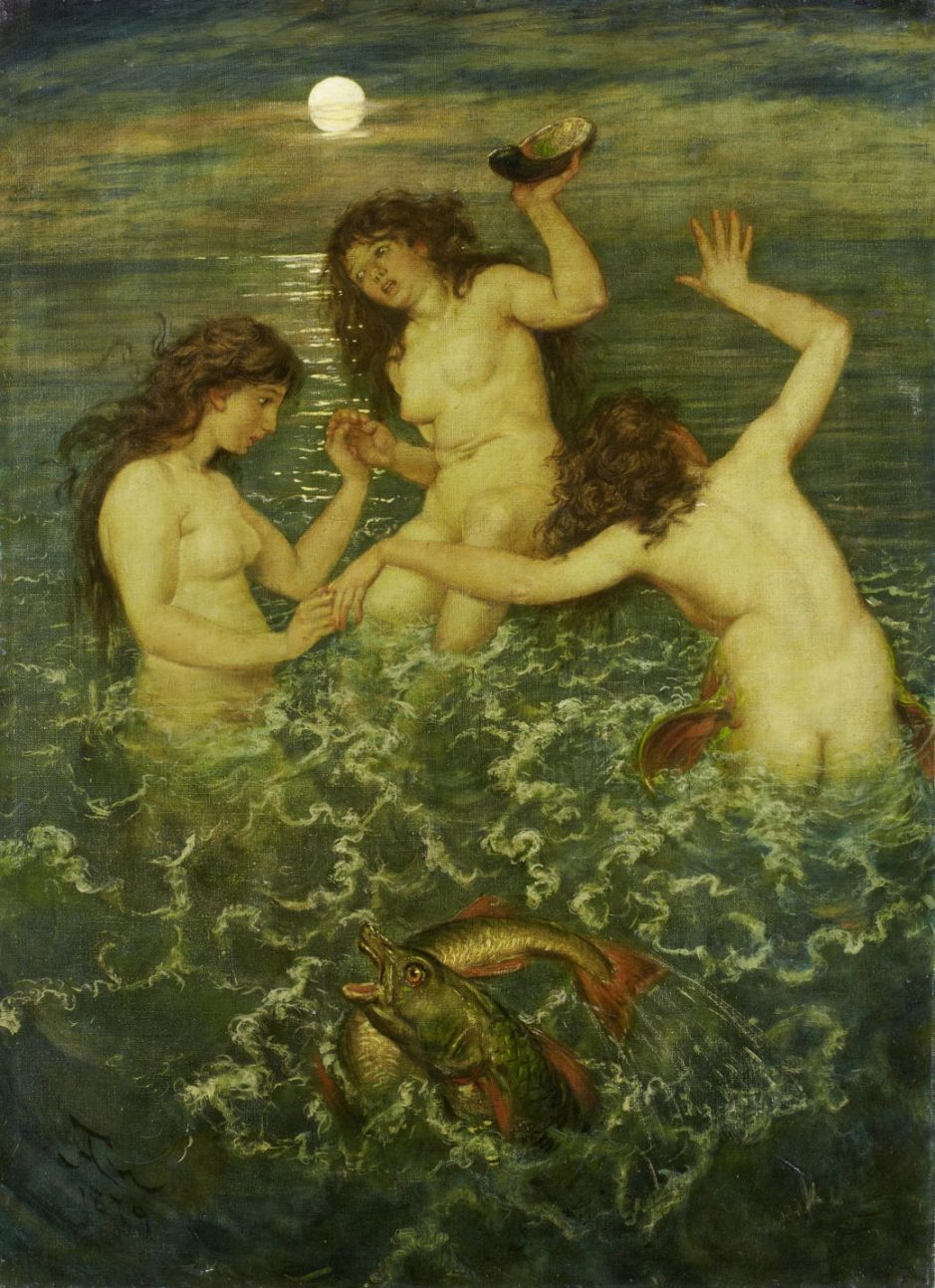Reading Visual Art: 234 Fish A
Because most fish aim to spend their entire lives underwater, where few artists go to paint, fish are seldom seen in paintings. That contrasts with those who try to capture fish by going fishing, an activity I have previously covered in this series in this article and a second.
Most of the aquatic creatures seen in paintings of myths, including those accompanying the god Neptune, appear to be caricatures of marine mammals including dolphins, or sea-monsters bearing no resemblance to fish.

One exception to this is Joseph Stella’s The Birth of Venus from 1922. As might be expected, his treatment is completely novel and seems to have benefited from visits to an aquarium. Aphrodite is shown at sea, in the upper part of the painting her upper body above the waterline, and below morphing into an aquatic plant underneath, where it finally merges into a helical shell. Matching the birds and flowers above the water are brightly coloured fish below.

Another interesting exception is Joachim Beuckelaer’s depiction of water in his Four Elements cycle from 1569. This shows A Fish Market with the Miraculous Draught of Fishes in the Background, the one place even landlubbers would come across fish, combined with the Gospel story in the far distance.

In the summer of 1872, as a one-off, Gustave Courbet painted an allegorical still life of The Trout, that is “hooked and bleeding from the gills”, a powerful expression of his personal feelings after being imprisoned for damage to the Vendôme Column during the Paris Commune the previous year.

JMW Turner recruits a school of fish for effect in his Slave Ship from 1840. His threatening sky and violent sea put the ship in the middle distance, silhouetted against the blood-red sky. The foreground is filled with the ghastly evidence of the slaves who were cast overboard.

Seen in amongst a feeding frenzy of fish and scavenging seabirds are hands raised from the waves in their final plea for rescue, a gruesome manacled leg, and various shackles used to restrain the slaves when in transit. Further back on the left a vague white form could represent spirits, and on the right is the thrashing tail of a sea monster.

Fish make the occasional appearance alongside legendary mermaids, as in Hans Thoma’s Three Mermaids from 1879. These mermaids are remarkably human in form, lacking fishtails, and frolic with fish under the light of the moon.
Historically the most important fish in Europe has been the humble herring. In the Middle Ages herring fisheries prospered and were the foundation of Copenhagen and Great Yarmouth, and influential in early Amsterdam. They remain strongly associated with the Netherlands and Nordic countries, where they are commonly preserved in brine (soused) or pickled.

Gabriel Metsu’s Woman Selling Herring (c 1661-62) is going from door to door with her fish, here trying to convince an old woman standing with a stick at the door of her dilapidated cottage in the Dutch Republic.

In Hans Andersen Brendekilde’s Home for Dinner from 1917, a young girl holding some fresh fish stands talking to a man with a spade.

JMW Turner toured the West Country as far as Cornwall in 1811, and the Tate Gallery has his ninety-page sketchbook recording many views of the Cornish coast from that visit. He later developed several into fine oil paintings, although it’s unclear whether this watercolour of St. Mawes, Cornwall, from about 1823, had its origins in those sketches and studies.
As with his paintings of other coastal areas, Turner shows a fishing boat coming in to a beach to land its catch, and the great activity in the open air fish market in the foreground. Behind are typical Cornish cottages stepped up from the shore to the top of the coastal cliffs, and the castles of St Mawes (closer) and Pendennis, in Falmouth (more distant, on the other side of this estuary).

Richard Dadd’s Fish Market by the Sea, from about 1860, shows an impromptu open-air fish market, run by the fishermen’s wives, to sell their husband’s catch as soon as it had been landed.